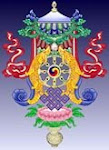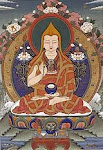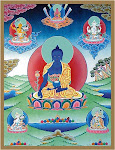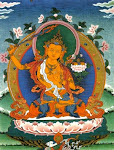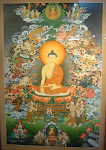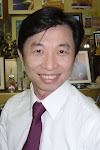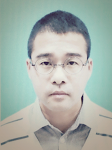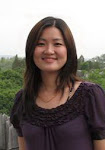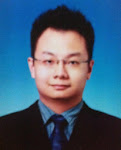According to bodhisattva, from bodhisattva scriptures how he generated bodhichitta and how proceeded on the path, bhumis, so there are very extensive stories. So in each life how many Sanghas, unbelievable number, for example, born as, born to the king, born to one king, called Shundu Tsondru Chöpa, one time born to one king, so Buddha’s past life who is the son of that king Shundu Tsondru Chöpa. Then Tathagata Pangpa Chenpo and all the Hinayana, the Hearer-Listeners, the Sanghas for ten million years, ten million years like that, ninety-nine, ten million years ninety-nine, for that much length of time made offering, offered service, generated bodhichitta, like that, this is just an example. There are many other stories, with each, in each life how many years, so many thousand years made offering to buddhas, with all the entourage, sanghas, there’s so many stories. This is according to bodhisattva, from bodhisattva’s scripture, so much more.
For example when the Buddha’s past life, Bodhisattva Gyalpo Dawö, born as king, Dawö, so that time, in the front of one tree, then Brahma Lui-te-tsa, called Lui-te-tsa came to beg the head. So then that time Buddha’s past life Gyalpo Dawö told to the Brahma Lui-te-tsa, “In front of this tree I already made charity of my head nine hundred and ninety-nine times, I already made charity my head in front of this tree,” so told Lui-te-tsa that, when he came to beg for the head. So Buddha’s past life, Gyalpo Dawö said, “Under this tree already I made charity, nine hundred and ninety-nine times I have made charity of my head.” So it is explained from the Fool and Wise, this sutra of Buddha’s life stories, the Foolish and Wise. So even in front of one tree that many, about a thousand times Buddha made charity of his head to others, so no question about the other countries, how much bodhisattva deeds, holy deeds is done, so will be unbelievable. So like this completed the bodhisattva deeds, completed all the merits, the transcendental wisdom merit and merit of fortune.
Then in Ogmin, in the pure field Ogmin, adorned with, “adorned with the essence of flower, adorned with the base and essence of flower,” I am not sure what the meaning is, so in that Ogmin field, enlightened. Then in the numberless field of sentient beings, equaling the sky, did work for transmigratory beings with unconceivable, unimaginable transformations that it can subdue the different sentient beings, different world sentient beings. So in the past Buddha bodhichitta was generated and he made prayer, so that is ripened, as he made prayer it ripened, to benefit sentient beings in this world, this unforgettable world, so I think in our world, this southern continent.
So when the Buddha is very close to show the holy deeds, the supreme transformation, shakpa tulku, the supreme transformation, then took the birth in the Tushita, as the deva’s son Dampa Tog Karpor [Sveta-ketu], in Tushita, then satisfied the devas in Tushita by teaching Dharma. So when the time to descend in this world happened, then revealed to the perfect Maitreya, Jetsun Jampa and so forth, many devas in Tushita, one hundred eight different Dharmas revealed in Tushita, so many, [pause] the perfect Maitreya and so many other devas there. Then put crown on Maitreya’s head, put jewel crown and then inaugurated as regent there, the substitute of the Buddha, Shakyamuni Buddha, and saw ways, five different ways then with the numberless entourage of devas, with the numberless unimaginable so many different offerings, then descended in this world from Tushita.
Then in this world the king Ze-tsang, Ze-tsang is the father, his wife, the younger one, her name Gyutrul Chenmo, so Buddha was conceived there in her as she was abiding in the purifying and reviving, sojong, so conceived in her, the right side, the right side there then there is the celestial mansion, the unfathomable celestial mansion that which transformed, the right side of her body. On the throne, in this celestial mansion there is a throne, then with robes on, ten months abided there. [pause] Then in the, so this is the uncommon view, that numberless bodhisattvas and the nagas and devas, all those white-side ones, nöjins and so forth, numberless sentient beings who are object to be subdued, even during those ten months [pause] when the Buddha’s in the mother’s holy body, revealed Dharma, revealed Dharma to the sentient beings and liberated, ripened and liberated, so brought to liberation, enlightenment.
Then with thirty-two wonderful signs, in
When the Buddha took birth [pause] then the king, the father, Ze-tsang, all his wishes actualized. Then the nöjin Shakya Pel and Brahma, Indra and so forth, many devas, all those devas prostrated. Then the Shakya Thunbo, Shakya, the angry one, the Shakya the angry, wrathful one, those beings, those Shakyas then they, Buddha’s holy body, Buddha’s magnificence, the glorifications, unbelievable so much, they could not bear that, so par kun ba, I’m not sure how to say, Buddha’s holy body is so glorified, so magnificent, kind of, [pause] I guess, I think they felt small, they themselves felt small, I think, I’m not sure the exact translation. Gradually called deva of the deva, gradually Buddha is called deva of the deva, it means highest. Called “Bringer of all success” and “deva of the devas” and Sakya Thubpa, these holy names are offered.
Then the people who check the signs of the child, signs of, special sign of the child, those who check, astrologers or the, who check the signs of the body, they said that, if you are, if it is stayed, the child, that means the Buddha, [pause] lived in the, if the child lives in the palace then he will become a wheel-turning king. Then he will renounce the householder life and he will become enlightened. He will be ordained and will become enlightened. So those people who check the sign, the sign of the child, predicted this.
Then, after that, Buddha accepted to do the work for sentient beings, to do the work for sentient beings with play, handicraft and with art, [pause] here it says, according to the worldly beings, the young time competition, doing competition, like normal in the world, who can lift up heavy things or there is another competition by, what is it, juggling or huh? This is common in
Then as, like normal in the worldly life, do like that, the tak ze ma, so forth, sixty thousand accepted, sixty thousand wives. Then with skillful means to hold the king’s reign according to the holy Dharma, then ripened unimaginable numberless creatures by that skillful means: holding the king’s reign according to Dharma. So that was not as, whereas these days countries, there is a government, there is spiritual and separate the government from religion, not like that here. So continues or holds the king’s reign according to Dharma. So with that skillful means ripened numberless sentient beings, unimaginable numberless creatures, brought to Dharma, ripened their mind.
Then as ten-direction buddhas, devas, white-side devas, then also songs, various music, those sounds persuaded, then Buddha [pause] that young time thought, Now this is time to renounce householder life, to take the ordination of renunciation.
Then gradually, he saw through the four doors of the city, gradually he saw that sentient beings who are old aged, sick, and died and then after this saw a bhikshu, who is a transformation, who is a manifestation. After seeing through the doors, sentient beings’ old age, sick and died, then he saw this monk, bhikshu, who is a manifestation. Then he showed the aspect, Buddha in young time showed aspect that he realized the shortcomings of the lay life, householder life and saw the benefits, he perfectly saw, realized the shortcomings of lay life, householder life and the benefits of living in the ordination of renunciation.
Then when he was 29, when Buddha was 29 age, [pause] when that happened, 29, even though hundreds of bodyguards who are outside of the king’s palace, even they tried to stop [pause] from inside the king’s palace, from the celestial mansion, from above, there happened steps, divine steps, deva’s steps put there. Then went through that, then went over the steps, the deva steps, to go down, then rode over the horse then the four guardians they lifted up the horse, the four legs, the four guardians they lift up. Then many entourage of devas and inconceivable particular offerings, then went so fast, went very quickly across the country of Shakya, Ge-ta and Khayul, crossed by these places, Manna, those towns. Then, so six phagtses went away. [pause] So reached to the, there is a river, reached the near, one town called Yil pon che, Avoiding Country. Anyway, near that town there is a river, beautiful river, so reached near.
So the phagtse, this has different ways of counting according to Abhidharmakosha, then there’s according to Kalachakra, there are different ways of measurement. I think Abhidharmakosha….
[Rinpoche converses with the geshe in Tibetan.]
The Abhidharma way of counting, which is different from Kalachakra, so the five fathoms is one gyangtak and maybe eight gyangtak is one phagtse. So that says six phagtses so he went beyond.
In the presence of the stupa Chöten Namdak, in the presence of the stupa then he cut the hair by himself. Then took the renunciation of householder life, the ordination of renunciation, by taking the robes that was left by the previous Brahma, previous sages, so taking the robes from Indra. Then all the ornaments and the horse gave to the helper and then returned back. Then crossed the River Ganga and went to
Then that time, five hundred servants sent, maybe by [pause] from the city Segya, the five hundred servants are sent to Buddha, maybe by the parents, not sure. Then from those five hundred servants then only five accepted by Buddha then all the rest he returned, let them to return back. Then at the water Narenja, the great river Narenja there he lived six years of ascetic life, then he abided in the concentration there, he abided in the meditation, concentration, not concentration camp , concentration. Then with the, with that skillful means then ripened, benefited so many devas and sentient beings, devas, trag trig, one, twelve trag trig human beings and devas, and sixty-four ten million devas and human beings, with these skillful means ripened their mind. Living ascetic life there near the great river Narenja and abiding in meditation, with that skillful means benefited so many sentient beings, ripened the mind of the twelve trag trig, I think it’s a billion or one hundred billion, like that, twelve devas and human beings, number trag trig, then ten million like that, sixty-four ten million, devas and human beings, their mind is ripened.
Then he rose up from the meditation and then took food, there’s, where you abide, you live in meditation without food, without any eating, without gross food, then abiding in the food of meditation, food of concentration. So here after six years living ascetic life, rose up from the meditation, then took the gross food, then did washing at the River Narenja.
Then from the village called, a girl, Lekyema and Kandroma, two girls offered milk from one thousand cows, like that, [pause] put together, [pause] I’m not sure what it means. Made kind of essence. I’m not sure whether they churned, milk from thousand cows maybe churned, I’m not sure what it means. Anyway, made the essence and then offered to Buddha. Then Buddha become very glowing, holy signs of exemplification, become very radiating. Then Buddha went to Bodhgaya for enlightenment. [pause]
Yeah, mention that.
Then Buddha went to Bodhgaya to achieve enlightenment, took the grass from the grass-seller, Tashi, the crab grass, then used for the seat. Then with crossed legs sat, for enlightenment, to achieve enlightenment. Then from the center of the two eyebrows, from here beams emitted away, then the beams made to move all the place of the maras, then the maras they find out. Then the numberless hosts of maras, the war, numberless hosts of the maras’ war came, the chief of the maras with the numberless hosts of the maras’ war, so the entourage, came in front of the bodhi tree where Buddha was residing there, to achieve enlightenment.
So they made rainfalls of weapons to the Buddha’s holy body but the Buddha without the slightest movement of the body, just holy mind abiding in the concentration of loving kindness, due to that all these weapons turned into rainfalls of flowers.
Then that time the maras they told Buddha, “Hey, young king, king’s son,” the maras said, “Hey, Gyalpo Zhonnu, that’s the name, Gyalpo Zhonnu, get up, get up and engage in the king’s reign, the activity of the king. How you can achieve liberation, just from this much merit, how you can achieve liberation, tell us,” the maras said. Then Buddha said like this, in Tibetan [Tibetan] so Buddha said that, this is interesting part, I won’t be able to translate word by word exactly but I have only captured the meaning. So Buddha told to the mara, I guess the king of mara or something, that for you, from one offering, from one charity that you become the possessor of the desire realm. I did numberless times, numberless made offering of charity, so is it possible that I don’t achieve enlightenment? You, from one offering of charity you become owner of the, you become possessor of the desire realm. So I did numberless times the offering charity, why is it not possible that I won’t achieve enlightenment?
[Rinpoche converses in Tibetan with the geshe.]
So anyway, there’s the word denpa that perhaps that may be “witness,” but I am not a hundred percent sure. So Buddha said to the mara, I think it might be probably the king of the mara, “You become the possessor of the desire realm by one offering one charity which doesn’t have a witness,” the last word may be witness, but I’m not sure. Anyway, so the essence is that. Then Buddha said, I did numberless times the offering charity, then why is it not possible that, is it possible that I don’t achieve enlightenment?
Then the mara said, “My witness that by my doing one offering charity become the possessor of desire realm is you, is the Buddha,” because Buddha said you become the possessor of the desire realm by having done one charity, one offering.
So then mara is saying, my witness is you, that I become possessor of the desire realm by making one charity, one offering. So then mara said, “Who is your witness that you did numberless times you made offering of charity?” Then the bodhisattva, the Buddha, then bodhisattva, then put hand like this, put the hand like this on the ground, then said, “This [Tibetan]: this earth is the place of all the transmigratory beings, the moving ones, unmoving ones, all equal, there is no closer or harboring, keeping in the mind, kind of keeping in the heart, bad, harboring, might be that. There is no closer and harboring. This is my witness I’m not a liar. So you should be my witness.”
Then the earth, when the Buddha said that, the whole earth moved, shaked six times. Then from the earth, the earth goddess came out, [Tibetan] earth goddess came out then with the two hands put together, smiled. Then said, the earth goddess told Buddha, [Tibetan] “You the great holy being, it is true what you said.” So she became the witness, the earth goddess. “It is exactly what you said, this is direct perception to me,” the earth goddess said. Then the earth goddess said, “But you are the witness of devas, the whole world,” earth goddess told. Then she disappeared. [pause]
Then the many mara girls showed various deceiving forms, magical, various magical deceiving, cunning, showing body uncovered and so forth, to distract Buddha’s holy mind. So Buddha abided in the concentration of ugliness. Then Buddha blessed these girls, these young girls showing magical deceiving forms, magical deceiving, showing beauty, all these bodies uncovered, so then the Buddha blessed to old ladies, transformed into old ladies.
Then the groups of maras are scattered away, so many maras they generated bodhichitta. Then Buddha abided in the meditation covering the sky. Then the Saka Dawa, it’s the name of the Tibetan fourth month, on the 15th, the dawn time, when the dawn rose then showed the holy deed, achieved enlightenment. Then the devas offered flowers, they offered so much flowers, so much flowers from the sky, that when you walk which reaches up to the knee. Then the whole earth, shaked. The whole world is illuminated, covered by light.
Then in order to realize how Dharma is so precious and who request the teaching to collect extensive merits, for many purpose then, [pause] for seven weeks Buddha did not turn Dharma wheel after enlightenment. So Buddha kind of like, there is a verse that Buddha said that, I guess, I don’t remember the whole entire verse but how Dharma is so precious and sentient beings do not have karma or something, there is verses Buddha mentioned, it starts with [Tibetan], something like that, that there is no sentient beings who listen to teaching, something like that. So Buddha kind of little bit like kind of discouraged or sort of, in the aspect. Anyway, didn’t turn Dharma wheel for seven weeks.
Then the leader of the business, Kargun and Zangpo, these families offered food to Buddha. Then the four guardians they offered four stone begging bowl, then Buddha blessed that and those two business leaders, Kargun and Zangpo, this family put the food in the stone begging bowl. So four, there are four guardians, the guardians offered four but then Buddha blessed into one, and then they put the food in this, then Buddha took the food and then Buddha taught this ?tashi tsekpa, this auspicious, these verses that I mentioned one day, there’s one, I mentioned one day that, I think, just one ore or two days ago I mentioned that, there’s one prayer that you can recite when there’s, doing things in the wrong astrological time or when there’s. obstacles. That’s one of the prayers, auspicious prayers, it makes, so there is inauspicious so by reciting this, it transforms, it makes it auspicious so it doesn’t, that which is obstacle then you make it auspicious, cause of success, you turn into cause of success. So this, Buddha gave this teaching.
Then the Brahma, Tsukpachen, so forth, requested again and again to turn Dharma wheel. Then Buddha accepted to turn Dharma wheel then the first Dharma wheel in
Then also, not only them then after then, many others Nyerwa Nadai, Tengyur Oser, Gyewa Oser and Chulong Oser, Sharipu, Mangalyipu. The Sharipu who is excellent in wisdom, Mangyalyipu, who is excellent in psychic power, the two heart disciples of Buddha. So then with entourage of two hundred and fifth entourage and so Buddha gave teachings and then so forth. And then numberless devas, human beings ripened and liberated them, then covered the whole earth, so the reputation covered the whole earth.
Then the King Ze-tsang invited, heard this and invited in Shakya, invited again and again in Shakya, then they went there, Buddha went in Shakya. And Gyalwa Ze-tsang, and four brothers, then many hundred thousands of Shakyas, then numberless devas, human beings then Buddha gave teachings, ripened their mind, liberated them.
Then in Sravasti, that’s where Buddha showed the miracle powers, did the holy deeds of performed miracle powers. So these fifteen days, so today is the last one, yeah, so fifteens days performing, showing the miracle powers, showing holy deeds the performing miracle powers. So as Sravasti, that’s the place where Buddha lived twenty-five years, the longest time Buddha lived in any place is Sravasti, twenty-five years. So three years, last three years near, where there is Buddha’s, where Buddha abided, the rooms and all this place is there and a very nice garden, the ground, the main place. There is other arhats. Buddha’s bathing place, this, this, this. There is all the different rooms. Then close by where Buddha lived three years. So all together twenty five years in Sravasti. So that many people made comment that this place when you go there it brings so much peace and happiness in your heart.
There is one lama who built a monastery in Sarnath, his name is Kuse lama. So he told me that whenever he feels too much, too much responsibility, too much work, then whenever he feel so much, too much, then he stops everything, he goes to this Sravasti and there he feels so much peace every time he goes there. Every time he goes there. [pause]
And also Kirti Tsenshab Rinpoche made a very high comments of that place. So that is the first time that Kirti Tsenshab Rinpoche met His Holiness the Dalai Lama outside of Tibet, so Rinpoche gave for people there, pilgrimage, I think, teachings on Three Principles of the Path or Foundation of Good Qualities, something like that. So Rinpoche made the high comment that he thought it will be so good if there’s retreat houses, place, very good place to do retreat.
So I heard many comments from people. So then I sent one Italian student, he died already a long time ago, so I sent him to check the place. So that time I had a wish to build seven, six or seven retreat houses there.
So then he said, his name was Stefano, he become monk two times or three times, so I asked him to check. So he said when he went this place, the meditation, other place he has to put effort to meditate but this place the meditation just comes, he said that.
So then finally I, it happened to be, it happened to myself to be there with few people. [pause] So when I visited that place, that’s the only place that those Indians who are taking care of this holy place and they asked me to build a monastery there. It’s strange. Usually nobody ask to do that but that’s the only place where the Indians who were looking after the land asked me to build a monastery there.
So anyway, so I had interest for quite, those times, quite a number of years, then one day I thought how difficult it is to find director, but then you build six, even six, seven retreat houses, you need somebody take care, after. So then when I think, already existing retreat places, difficult to find director to look after, like Bodhgaya, Root Institute or Dharamsala, Tushita or the Nepal, so difficult to find a director, person who look after, so difficult, so, then with all the rest of the things, so when I think, then it made me discouraged. When you think really down, the work, first of all how difficult to find the person to look after, then all the rest, then my mind kind of got discouraged, and then disappeared.
So that’s also Rinpoche, like Kirti Tsenshab Rinpoche told good idea to have six or seven retreat houses, anyway.
But now, but that time when I was there already many people, from different countries are building, coming there to build temple, things like that.
I think he got jewels in the mouth, he got wish-granting jewels.
So that’s the place where Buddha, so there’s fifteen days of showing the holy deeds, performing miracles, subduing the different sentient beings, taming the mind of the different sentient beings, so there is quite a bit of stories of that. I don’t remember by heart, so, different days which sentient beings are subdued, tamed this and that, different things. So however, basically that’s, Sravasti is the place where Buddha showed the holy deed performing the miracles. Defeated, tamed, subdued the six Hindu founders, so who always compete with Buddha, who always criticize Buddha, so I think it’s their karma, I think ripened there during that time, Buddha to tame them. And their entourage, those Hindu founders, six founders, their entourage, ninety thousand, so like that, the numberless devas, human beings then Buddha, by performing the miracle power, ripened their mind and liberated them.
So during that time then all the people, they have high, very high respect to the Buddha and the Sangha during that time. They do so much offering service to the Sangha. So then Buddha thought that might become obstacle for their Dharma practice, then Buddha stopped that. Then led Buddha’s father and mother in arya path, caused them to directly see the emptiness, I think.
So that’s the deeds that all the buddhas who descend in this world will do, so this is the twelve deeds, and now here this eleventh, twelve deeds.
[long pause]
So then Buddha, [pause] then this place called, the name of the place called Drawing All the Trees and Exploding the Earth, there are the Armanika, on this, I’m not sure what [pause] the name of the mountain or I’m not sure what it is, Armanika, on this Sharipu and so forth, eight thousand arhats, then Buddha did abiding in the summer retreat. It is translated, rainy season, abiding, yar-ne, abiding in summer retreat. But I mean, of course, that’s the time when rain comes, but the exact translation is abiding in the summer retreat. So bhikshus, bhikshunis, those who are living in the vows, the three important activities, this is one of them, abiding in summer retreat, the monasteries. One is the reviving and restoring, sojong; then another one is abiding in summer retreat. Other one is releasing. So, three.
So then the Buddha went in the, Buddha’s mother’s born in deva realm, so Buddha went there to ripen mind of the many devas and to liberate them and then after abiding in summer retreat then Buddha went to, up to Ogmin, deva realm Ogmin, and then gradually, up to Ogmin, then numberless devas, Buddha did work for numberless devas, benefited them. Then the bhikshus they requested Buddha, the bhikshus requested Mangalipu, Mangalipu requested Buddha to descend in this world.
Then the ninth month, the 20th Tibetan day, ninth month, then the Buddha came down on the steps that is put by devas, so some, came down, some without touching, with miracle power came down, some touched with the holy feet like that, in the city, in India city called Salden. Numberless beings then seeing Buddha coming down, in Salden then gave incredible joy to their eyes and to their mind, and planted seed of liberation in so many people’s minds. So that time then various thoughts rise in the hearts of the people who saw the Buddha that time. Then Buddha gave teachings how samsara, samsaric perfections, samsara pleasure has no essence, and that important to achieve, to attain the path to liberation.
Then Buddha brought so many sentient beings, numberless sentient beings in the path to, brought into the door of the path to three vehicles, door of the three vehicles, the Lesser Vehicle and the Paramitayana, the Mahayana vehicle, the Paramitayana then the secret mantra, Vajrayana vehicle.
Then went to Rajgriha, Buddha went to Rajgriha, then the whole earth shaked six times, and then the whole area completely filled with beams and with all these unconceivable miracle powers. Then Buddha turned the, to the Hearer-Listeners and the nagas, devas, numberless beings, of course, bodhisattvas, numberless, then turned the middle Dharma wheel, Dharma wheel which has no characteristics, which as no characteristic of true existence, which has no, turned the Dharma wheel, the emptiness, that phenomena, the I and aggregates, all the phenomena do not have nature, nature, do not have nature, what nature? The truly existent nature.
Then went to, I don’t know the Sanskrit, went to Yangpachen, then turned the last Dharma wheel there. The Mind Only school their view comes. Then turned Dharma wheel there. Then to many other places, besides this, many other places according to the wishes of sentient beings, who are object to be subdued, then according to their wishes, the imprints, then turned Dharma wheel, unconceivable Dharma to, opened the door of Dharma to them. Then, unimaginable numberless sentient beings who are objects to be subdued, devas, human beings, so many are ripened, so many their minds are ripened, their hearts are ripened and liberated by Buddha.
Then, now next, most of the sentient beings who are object to be subdued directly by Buddha’s holy body, who are object to, who can see Buddha directly, Buddha’s holy body directly and, yeah, who can receive teachings directly from Buddha, so working for them, almost it’s finished. So the sentient beings did not have any more, the human beings in this world do not have any more karma to see Buddha’s holy body directly. And then to those who don’t have fortune to see Buddha directly, Buddha’s holy body directly then like, so us, including us, then special compassion the holy mind, compassion to us sentient beings, who don’t have karma to see Buddha’s holy body directly, then dividing Buddha’s life in five parts. So one part, then Buddha dedicated for us, the teaching of the Buddha to last long time in this world, to be spread out. Then Buddha, [pause] stopped the life and then blessed the Buddha’s teaching to exist in this world for five thousand years. [pause] So I think, then, stops this life, I think he intended to pass away, I think.
Then Buddha went to, I think, Kushinagar, where we are going to build the 500-feet Maitreya statute, Kushinagar. [Ven. Sarah confirms.] Make sure, sometimes not sure the name. So Buddha went to Kushinagar and then the last two, one who is doing the Titsi Gyalpo Rabgya, the one who played the violins, that he was feeling so proud, probably he thinks he’s the only one, best player in this world and then, no, no. Maybe this is different. I think this is different, sorry. Not playing the violin, sorry. This is smell-eater, the king Rabgya. I think it’s different there, I made a mistake. Titsi Gyalpo Rabgya, and then other one is Kundu Gyur Rabsang, so these last two objects to be subdued. Then at Kushinagar then ripened their mind and liberated them.
Then Buddha told the surrounding bodhisattvas, so said, the four entourage, the four aspect, four aspect entourage, so there is, so that is the gelong, male and female gelong and getsul, male and female getsul, able to, benefit to the sentient beings, so to read the Buddha’s teachings, scriptures, twelve branches then Buddha advised the vinaya teaching then that should be Buddha himself. After Buddha passed away then the people should, the Sanghas, the vinaya that should regard, the teaching to achieve liberation for self, so the Sanghas, they should regard that as Buddha himself. And the elder ones help the young ones. Advising the Sangha, elder ones help the young ones, gather them by needs. Then, young ones, this I’m not sure, young ones to not call name of the elder one, I’m not sure that’s, don’t understand what that means. Then for those who are devoted ones then, those who are devoted then birth, the Buddha’s birth and then the Buddha, Dharma, sorry, Buddha’s birth and then become enlightened, taught Dharma, passed away, should show the others these four things, these four directions, Buddha born, then enlightened, taught Dharma, passed away sorrowless state, should show these to others.
And then Buddha asked bhikshus, ask me if you have doubt, the three rare sublime ones, means Buddha, Dharma, Sangha, and the Four Noble Truths, if you have doubt, request, ask me. Then Buddha took out robes, upper part of the robes, Buddha took out and then Buddha said, bhikshus, looking at the Tathagata’s holy body is extremely rare. Look at the holy body of the Tathagata. So Buddha showed his holy body to the disciples. Then the bhikshus, they quiet for a while. Then Buddha said, like this, all the causative phenomena are perishable, they are nature of perishable, impermanent. So then this is the very last teaching of the Buddha. [Tibetan] So this one is the very last teaching of Buddha. Then Buddha showed the holy deeds, passed away sorrowless state.
Then the eight stupas and the, which was built, which is built each time when the holy deeds are performed, to remind, for the memory and of course, also collecting merits and purify also.
Then [pause] I think this may not be the eight stupas, I think I made a mistake. Maybe the eight parts of the holy body, I’m not a hundred percent sure, made the holy body eight parts then many relics, relics like mustard seeds, the round ones. So many relics came from, unimaginable numbers of relics manifested from the, relics like mustard seeds, came from this holy body. Then Buddha blessed, they covered the whole world, means the relics go to many different parts of the world. [pause]
Then all the sentient beings who make prostration, make offering to those relics, exactly as they think, as they wish, then they never, their life never go down, never reverse, from the three vehicles, from three yanas, three vehicles, the Hearer-Listener, vehicle of Hearer-Listener and Solitary Realizer, the vehicle of the Solitary Realizer and then the Mahayana, the Great Vehicle. So the three vehicles, before I mentioned the Lesser Vehicle, then the Great Vehicle, Paramitayana, and then the secret mantra Vajrayana, I think that was mistaken. So here the three vehicles is the vehicle of the Hearer-Listener and Solitary Realizer, then Mahayana, the Great Vehicle. So who engage in these three vehicles, they never change, they never reverse. So always go up, never go down, anyone who, all those sentient beings who do prostration, make offering to those relics of the Buddha.
Then in this world, in this unforgettable world, when the holy Dharma degenerates and become poverty of the, [pause] the precious Dharma, become poverty by preciousness, it says, degenerate the holy Dharma, then become poverty of preciousness. So this may not be external precious but I think might be related the same, I would think, the Dharma. So then it says, so this world become poverty, the holy Dharma degenerate, degenerated and then become poverty of preciousness, then these relics, Buddha’s relics, then these Buddha’s relics, seems at the end these Buddha’s relics they do function, these relics they become the jewel baiduryia, I think maybe sapphire, not Sophie, not Sophie, sapphire, jewel sapphire, [Tibetan] these relics will become [Tibetan], then it will eliminate poverty in this world. Then all these jewels, these relics become jewels then will transcend up to deva realm Ogmin, might be deva realm. There’s two Ogmins, one is where the arya bodhisattvas abide, where in reality, where Buddha, as you heard the story where become enlightened, but the Bodhgaya enlightenment is that’s in common view, in the common view that’s showing the, according to Mahayana that’s not, that is not the, that’s just showing, acting, showing the holy deed of achieving enlightenment, because in reality enlightenment unconceivable eons ago, so where enlightenment is Ogmin. That is according to Mahayana. According to Theravadin then the enlightenment at Bodhgaya, they believe, the Theravadin, in the common view they believe that as the first enlightenment. But according to Mahayana, it’s not that, unconceivable ages ago already enlightened. That is an actor performing the holy deeds, achieved enlightenment.
So these jewel, which were relics, jewels then transcend up to Ogmin, then various flowers, various flowers rainfalls happens. Then from those rainfall flowers then you hear Dharma, various Dharma sound. Then the devas of form realm, devas, desire realm devas they hear the Dharma sound, then they remember the virtue that they collected in the past. Then they don’t have interest, attachment, after that to their own realm. Then they descend in human world. Then they cause the human beings to engage in ten virtues and they bring the human beings, they lead the human beings into ten virtues. Then that time all these relics of Buddha they do unconceivable activities for sentient beings.
So with this great compassion, the founder, Shakyamuni Buddha when he generated bodhichitta first, much more powerful, much more brave-hearted, much more exalted, much more powerful than other bodhisattvas when they generated bodhichitta. Then in the middle when collecting merits, engaging in bodhisattva deeds and then Guru Shakyamuni Buddha’s is exalted than others, by bearing hardships, more special, exalted than others. Then at the end achieved enlightenment, attained enlightenment and then also that time also other buddhas and Guru Shakyamuni Buddha, Guru Shakyamuni Buddha is greater kind, quality is the same as other buddhas, but kinder than all the ten-direction other buddhas.
So in the Kshitigarbha’s Sutra, all the happiness, all the comfort, all the happiness that which is in the world, all comes from by offering to the precious sublime ones, the Buddha, Dharma, Sangha. So therefore, if one desire happiness, comfort, then always you should attempt to make offering to the rare sublime ones. So the, from Kshitigarbha Sutra, emphasize that, how important it is, always, every day always make offering, offer service to the Buddha, Dharma, Sangha, for the happiness of this life, for the happiness of all the coming future lives, for everything, so no question about liberation, enlightenment. So anybody who wish, anybody who desire, oneself, that you want to be good, you want to have happiness, anybody who desire that then one should attempt to make offering to Buddha, Dharma, Sangha.


